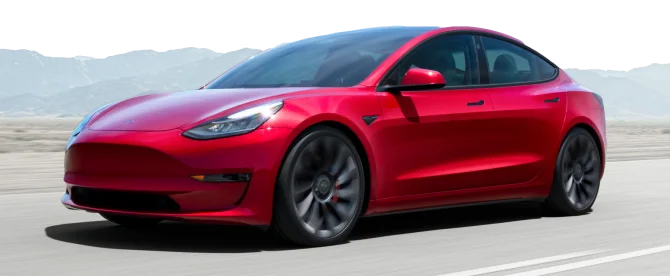Get this deal! Call now.
Speak with a vehicle protection plan specialist and get $300 off any new contract instantly.
Call 866-678-4172
or scan the code below


Most car owners prefer to keep their overall monthly cost at around 8-10% of take-home pay. Figure out your car payment amount, then add insurance, fuel, maintenance, registration, and a service contract or extended warranty. If the end result is within the percentage bracket, then you can comfortably afford it.
When drivers Google “How much car can I afford?” most calculators only show a car payment. That number matters, but it is just one ingredient in a much bigger recipe. A realistic budget looks beyond monthly payments to the true cost of driving a new or used car.
Start by setting a ceiling for your loan or lease payment based on your income, other debts, and savings goals. Some drivers like simple rules, such as keeping the car purchase price near 10% of take-home pay, or following a 20/4/10 style approach (aim for a 20% down payment, finance for four years or less, and keep transportation spending near 10% of gross income). Rules are just guardrails, though. The right number for you depends on your commute, insurance rates, credit score, and whether you plan to protect the vehicle with an auto protection plan.
Next, review the full loan structure. Interest rate, term length, taxes, and fees all shape affordability. A longer term can lower the car payment, but it increases total interest paid and can keep you upside-down longer. If you buy a used car, your down payment may stretch further, but you could reach major service intervals sooner. Whichever route you take, ensure your budget considers more than the monthly payment.
Oil changes, brake pads, tires, fluids, and inspections are predictable, until they are not. Every vehicle needs routine care, and all components eventually wear out. New car owners often get a brief period of complimentary maintenance, but after that, the costs are your responsibility. Used car buyers might face those costs even sooner, especially when mileage passes big checkpoints like 60,000 or 100,000 miles.
A practical way to plan is to add a maintenance and repairs line to your monthly budget. For a typical mainstream sedan, set aside a recurring allowance that reflects average service needs over time. If you drive a turbocharged, luxury, or high-mileage model, budget more. Remember that the first big failure rarely arrives with advance notice; it shows up as a dashboard light and a higher-than-expected estimate. That is exactly where an extended car warranty—more accurately referred to as a vehicle service contract (VSC)—can steady your finances.
When it comes to determining how much car you can afford, online tools make it easy to calculate realistic monthly payments and total ownership costs. These resources allow buyers to make informed decisions without the guesswork.
By leveraging these online tools, car buyers can quickly create a clear financial picture and make informed decisions before stepping into a dealership.
Even perfectly maintained vehicles can have complex parts fail. Modern engines, transmissions, infotainment systems, and advanced safety tech are sophisticated and costly to repair. An extended warranty shifts much of that risk to a third-party provider like Endurance, turning those unexpected big bills into a predictable monthly payment.
Endurance Warranty offers a range of coverage levels, from essential powertrain protection to near-comprehensive plans, and absolutely all of our programs come with helpful extras such as 24/7 roadside assistance, rental car benefits, and trip interruption coverage.
When researching providers and plans, look closely at what is covered, how deductibles work, and whether routine maintenance can be bundled. If you prefer budgeting certainty, including an extended auto protection contract alongside your car payment can keep your total transportation costs predictable.
Insurance premiums vary by driver profile and vehicle choice, so get quotes before you sign. Fuel can swing with market conditions and with your driving style, and small efficiency differences can add up during a long commute. Registration, taxes, tolls, parking, and the occasional car wash belong in the plan, too. Together, these items can rival the loan payment itself, especially in urban areas.
If you’re choosing between similar models, compare their fuel economy, insurance groupings, and tire sizes. Sometimes the best way to lower your total cost is to pick the model that is easier to insure and maintain, then protect it with the right extended warranty so you’re ready for almost anything.
Understanding how an extended warranty or vehicle service contract affects your budget doesn’t have to rely on exact figures. Instead, consider the general trade-offs between monthly payments, repair risk, and financial predictability.
These examples illustrate the principle: a warranty-first approach trades a small, predictable cost for protection against costly surprises, helping you plan more effectively and confidently for car ownership.
A healthy down payment lowers your monthly car repayment and reduces interest paid over time. Still, draining your entire emergency fund on day one can leave you exposed. Try balancing a meaningful down payment with some cash left over for registration, the first insurance bill, and initial maintenance. If you plan to add an extended car warranty, confirm the monthly cost and include it in your pre-purchase math.
Leasing? The logic still applies. Keep drive-off costs reasonable, estimate wear-and-tear expenses, and protect yourself from unexpected mechanical issues if the lease allows eligible coverage.
Whether you buy or lease, the target is the same: a stable, all-in monthly spend that’s firmly in your comfort zone.
If you want to be completely confident in your budgeting, follow these steps:
No matter how much car you decide you can afford, investing in a quality extended warranty or vehicle service contract is highly recommended. After all, there’s little to no point in calculating your estimated expenses if you’re leaving expensive repairs up to chance.
Want help figuring out which plan is right for you? Give an Endurance advisor a call at (800) 253-8203 or request a FREE quote. You can also see your price and recommended plans by shopping at our online store.
Read other helpful articles on car ownership, DIY maintenance, and much more over on our extended warranty blog.

We've received your vehicle information and will contact you shortly with your quote.
— OR —
Start shopping for a coverage plan now.

We're here to make sure you get the most comprehensive EV protection. That's why we've partnered with Xcelerate Auto to offer you transparent and dependable Tesla coverage.
Want us to contact you about XCare coverage for your Tesla?



Your protection is our top priority. Your quote is in progress and you will
receive a confirmation
email shortly.


Speak with a vehicle protection plan specialist and get $300 off any new contract instantly.

Call for $300 off any new plan!
By clicking the button, you consent to Endurance using automated technology to call, email, and text you using the contact info above, including your wireless number, if provided, regarding auto protection or, in California, mechanical breakdown insurance. You also agree to the Endurance Privacy Policy and Terms and Conditions. Consent is not a condition of purchase, and you can withdraw consent at any time. Message and data rates may apply.


Speak with a vehicle protection plan specialist and get $300 off any new contract instantly.
Call 866-678-4172
or scan the code below



Simply fill out the information below and we will follow up fast with your free no-obligation quote.
By clicking the button, you consent to Endurance using automated technology to call, email, and text you using the contact info above, including your wireless number, if provided, regarding auto protection or, in California, mechanical breakdown insurance. You also agree to the Endurance Privacy Policy and Terms and Conditions. Consent is not a condition of purchase, and you can withdraw consent at any time. Message and data rates may apply.

To speak to a vehicle protection plan specialist and get $300 off any new contract instantly
Scan the code below
Chris has been covering the automotive industry and topics ranging from road trips to driverless car technology for around 10 years. His own preference is for retro 4x4s that will stand up to a muddy field in the country.